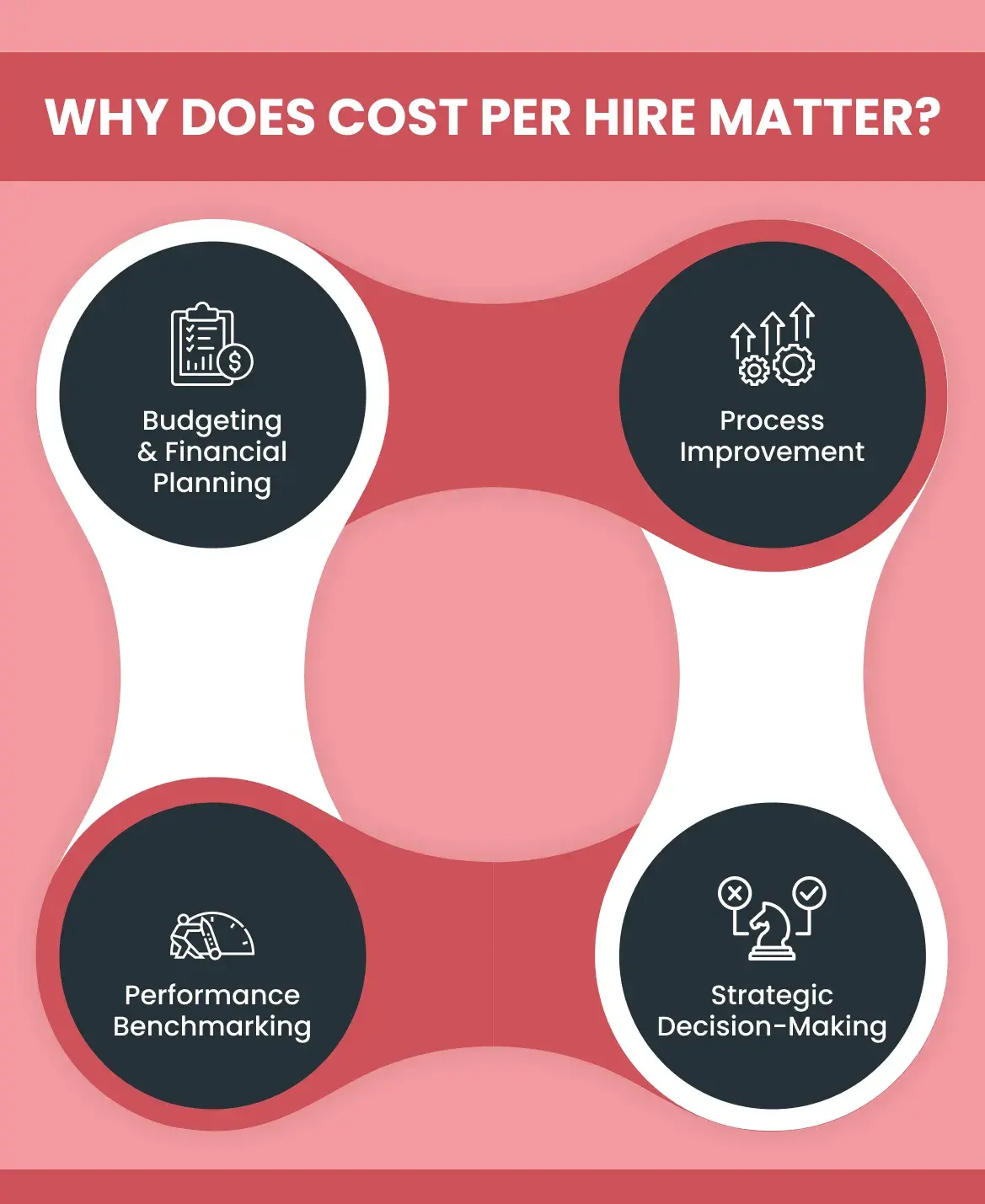Table of content
What is the Cost Per Hire?
It is a crucial metric used by human resources (HR) departments to evaluate the effectiveness and efficiency of a company’s recruitment process. It represents the total expenses incurred by an organization to fill a job vacancy. This includes all costs associated with the recruitment process, such as advertising fees, recruiter salaries, candidate travel expenses, sign-on bonuses, and the time spent by HR professionals to screen and interview candidates.
How to Calculate the Cost of Hiring
Why Does Cost Per Hire Matter?
Understanding the metric is vital for several reasons:
Budgeting and Financial Planning
Knowing the average cost to hire an employee helps organizations budget for recruitment and avoid overspending. It allows for more accurate financial forecasting and resource allocation.
Process Improvement
Companies can identify inefficiency in their hiring process by analyzing the components contributing to the average cost to hire an employee. For example, a company might consider developing an in-house recruiting team if third-party recruiter fees are high.
Performance Benchmarking
Organizations can use the cost per hire metric to benchmark their performance against industry standards. If the average cost to hire an employee is significantly higher than the average, it may indicate that the company’s recruitment process is less efficient than its competitors.
Strategic Decision-Making
The hiring cost metric can influence strategic decisions, such as investing in employer branding strategy or new recruitment technologies that could lower long-term hiring costs.
The cost of hiring an employee is a pivotal metric that provides insights into the recruitment process’s effectiveness and efficiency. It is essential for budgeting, identifying opportunities for improvement, benchmarking against industry standards, and making informed strategic decisions.
Top 5 Strategies to Reduce Your Cost Per Hire!
Are you currently experiencing financial strain due to the high average cost of hiring an employee? Don’t worry, you’re not alone! Filling open positions can be expensive. But the good news is there are ways to streamline your hiring process and significantly reduce your cost to hire. Here are 5 powerful strategies to help you save money and build your dream team:
Target Your Search
Stop casting a wide net! Clearly define your ideal candidate and tailor your job postings and outreach to attract the perfect fit. This will reduce the time and resources spent interviewing unqualified candidates. The average cost to hire an employee increases significantly the longer a position stays open, so finding the right person quickly is vital.
Explore the Pool of Candidates
When it comes to recruitment, you should target communities of professionals where you can find top talent handpicked to suit your specific needs and requirements.
For example, at Supersourcing, you can explore a vast pool of top IT professionals handpicked to suit your needs and requirements. Browse our database of candidates and filter them based on specific criteria, such as experience, skills, and location. Contact us today to find the right person for your organization quickly and efficiently.
Master the Interview Process
Streamline your interview stages to avoid unnecessary delays. To save time and resources, you can use phone screenings or video conferencing for initial interviews. Additionally, you can prepare a clear interview structure with targeted questions to evaluate candidates efficiently. The quicker you identify the right person, the lower the average cost to hire an employee will become.
Invest in Onboarding
A positive onboarding experience keeps new hires engaged and reduces employee turnover, which translates into significant cost savings in the long run. Avoid the high cost of rehiring by investing in a well-structured onboarding program that gets new employees up to speed and makes them feel valued from day one.
Track and Analyze
Don’t operate in the dark! Track your cost per hire and analyze where your money is being spent. This will help you identify areas for improvement and optimize your recruitment process. By closely monitoring the metrics, you can continuously refine your approach and ensure you’re getting the most out of your hiring budget.
Immediate Need for Tech Talent? Supersourcing can Help!
Hiring the best tech talent can be costly for businesses. The recruitment process involves significant expenses, burdening budgets and hampering other vital business areas. However, with the right strategies, companies can reduce their hiring cost and make the recruitment process more efficient and cost-effective.
Supersourcing is a platform that can help you hire the best software developers without increasing your cost. By connecting businesses with the top IT professionals worldwide, Supersourcing ensures you find the right candidates for your specific needs at competitive rates.
Reducing your hiring cost is about more than just saving money. It is about investing in your business’s future by attracting and retaining the best talent, which leads to innovation, productivity, and growth. Supersourcing can help you achieve this goal by giving you access to a pool of talented IT professionals who can give your business a strategic edge.



